Effective immediately masking is required for everyone when present on all inpatient units, in the Emergency Department (ED), the Urgent Care Centre (UCC), and the Children’s Outpatient Centre (COPC).
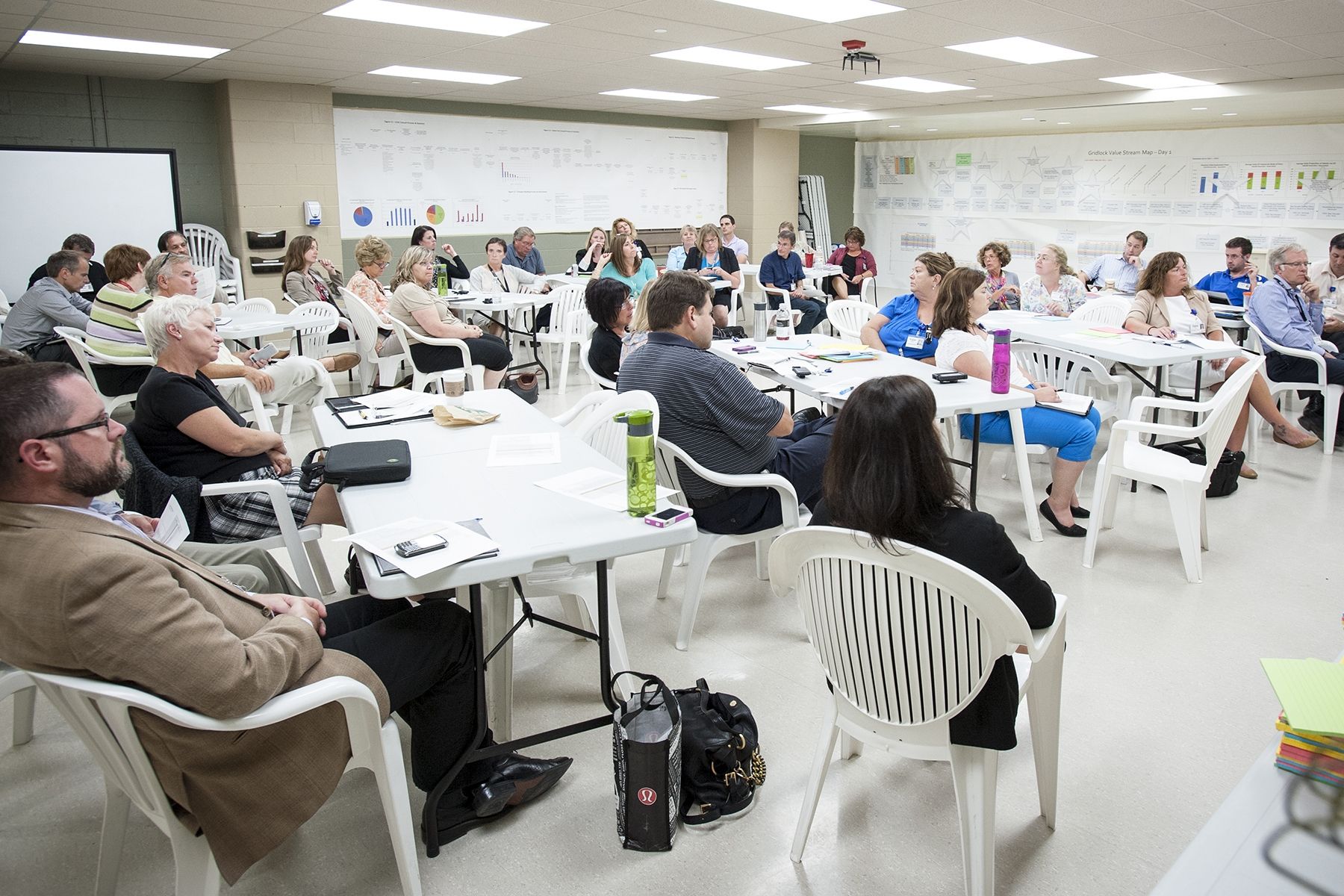
Solving gridlock remains one of Kingston General Hospital's top priorities and work has been underway all summer behind the scenes to come up with some innovative and lasting solutions.
The journey began in earnest back in May when a group of 75 people from inside and outside our hospital came together to study how patients flow through KGH, focusing on the moment they arrive at our emergency department (ED) to the time a decision is made to admit them to an inpatient bed. Out of this session, 10 opportunities for improvement were identified and participants agreed to prioritize five of them for immediate action. They are:
- Defining the process for decision to admit
- Determining a process for handover from the ED to an inpatient unit
- Determining the process for getting accurate and timely data to Bed Allocators
- Defining a standard bed notification process, including access to timely data around bed status for environmental services
- Reviewing the process for how on-call schedules are developed and circulated to inpatient units and the switchboard.
Interprofessional improvement cycle teams that include some of our Patient Experience Advisors are now working on each of these opportunities. Their goal is to identify the root causes of problems and to create and implement improvement cycles to address them within 120 days.
So far, each team has made a lot of progress and many of their solutions are currently being tested, or will soon be ready to be tested as pilot projects. As an example, the group working on "defining a process for decision to admit", is aiming to minimize the number of times a patient referral is made to the wrong service in our hospital. Wrong service referrals increase the length of time patients wait on stretchers in the ED so the team is now clarifying which services inside the hospital are responsible for which types of patients. It has also developed a special algorithm that will help determine which patients go to which service, so the ED can implement a sort of predictive admissions process.
"Ensuring that referrals are made to the right service, the first time, will help free up capacity in the emergency department," says Dr. Gord Jones, Emergency Program Medical Director. "At a time when resources are scarce and our patient volumes are going up, we have to change how we do things and work smarter."
To help us get there, each team has been using the tools and principles of Continuous Improvement and together they've uncovered some common problems about how things work now across the hospital.
One big issue is the lack of data now being collected on some important operational metrics. An example of this would be the discharge process. The Patient Care System (PCS) records when a patient is discharged, but we don't know when they actually leave the hospital bed.
Some other common challenges have to do with how our processes sometimes work. Often they are inconsistent across, and within, programs. People also rely on their relationships with other workers to get things done rather than on standardized processes. Staff also regularly resort to workarounds to keep things moving.
"We can beat gridlock if we change our old habits and ways of doing things and embrace processes that are standardized and patient- and family-centred," says Jones. "Our people are already working hard to do the best for our patients. The problem lies with our processes and those can be fixed."
To that end, each of the improvement cycle teams will soon be putting the final touches on their solutions. They will then be tested out in small areas of the hospital so they can be evaluated and improved if necessary. Once these pilot projects are complete, they will then be rolled out across the rest of the hospital.
In the meantime, another big meeting was held recently to study the next phase of the patient journey through KGH, from admission to discharge to an appropriate destination. Ten more improvement cycles were identified from this session and work is now underway to prioritize them.
"Improvement cycle teams bring fresh eyes to some old problems, and new tools to address them. If we focus on putting our patients and families at the centre of our new processes, the result will be improved patient care and access for everyone," says Jones.
Gallery
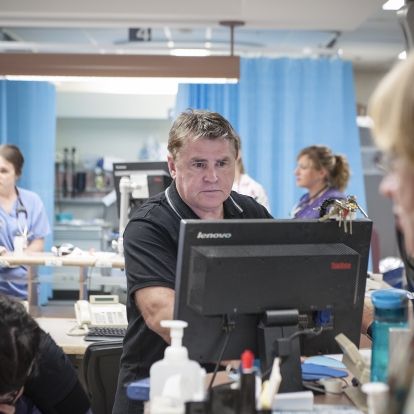
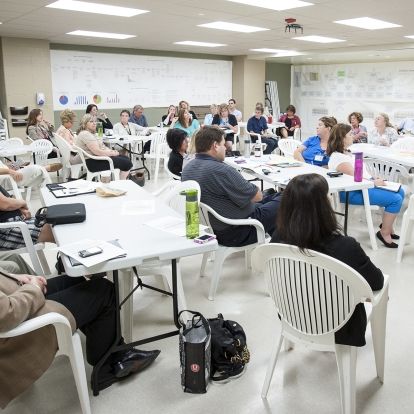
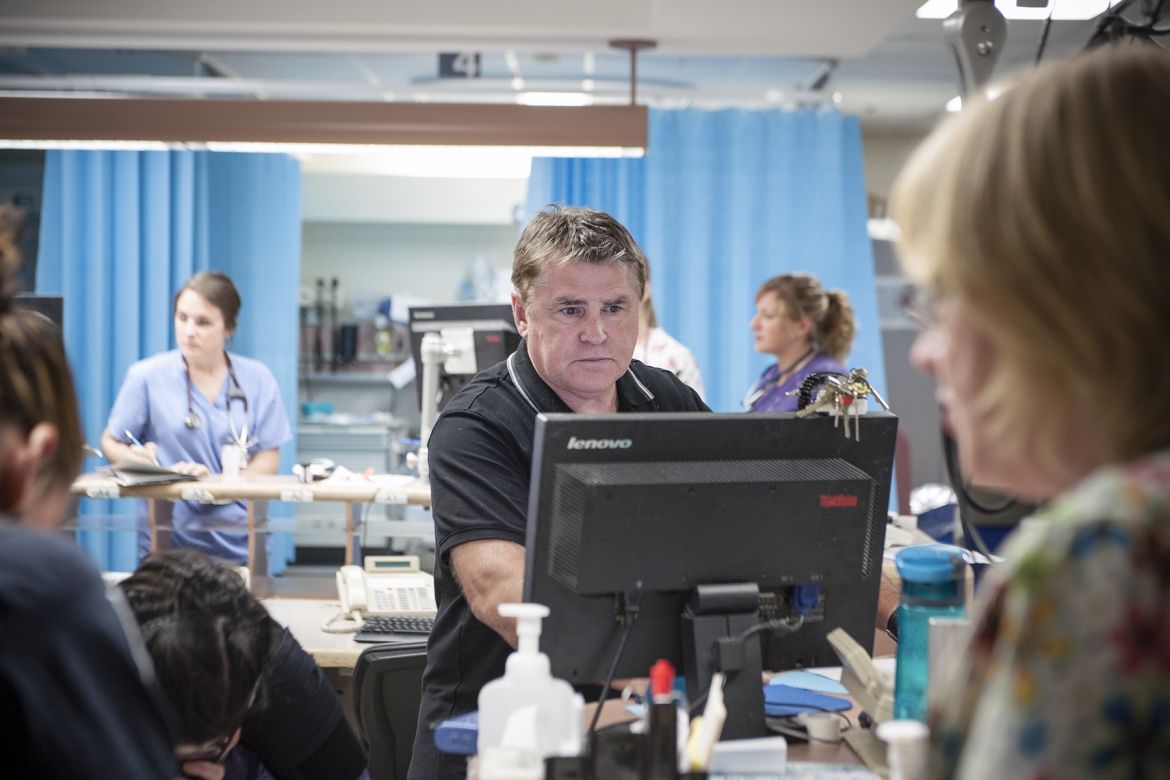
Dr. Gord Jones, Emergency Program Medical Director, is leading an improvement cycle team that's studying some of the root causes of gridlock in the emergency department.
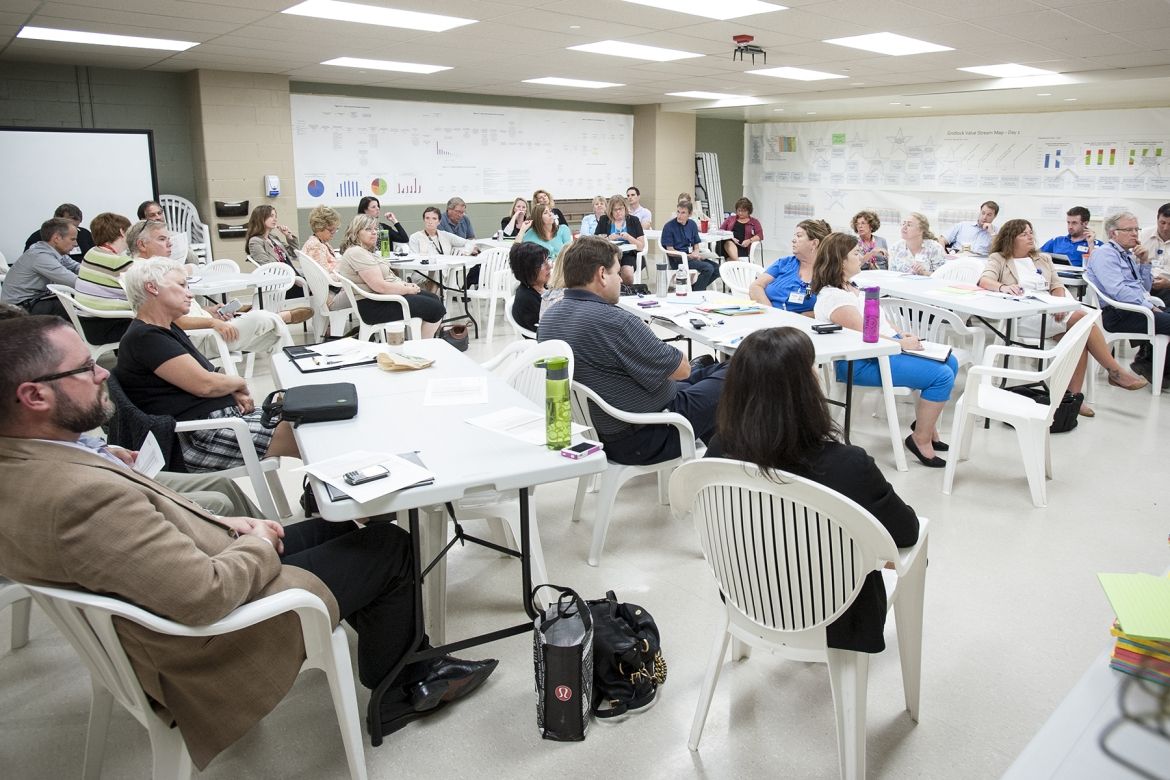
A recent meeting held to study the next phase of the patient journey through KGH, from admission to discharge to an appropriate destination. From this, ten more improvement cycles were identified and work is now underway to prioritize them.



